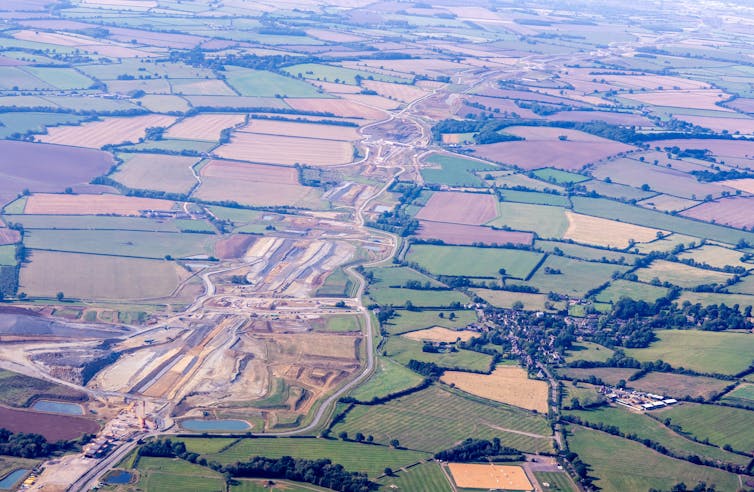The UK chancellor’s autumn statement is likely to be relatively uneventful – yet extremely significant. Although some headline-seeking tax cuts are rumoured, sluggish economic growth and persistent inflation leave little scope for major policy announcements.
That said, the fiscal update is one of the last opportunities for the government to set out its economic vision ahead of the next general election. Here’s what to watch out for when Jeremy Hunt takes to his feet.
On track?
Back in January, the prime minister announced his top five priorities for 2023: halving inflation, growing the economy, bringing down the national debt, reducing NHS waiting lists and cracking down on illegal immigration.
The first three of these ambitions fall squarely within the chancellor’s economic remit. The official forecasts published alongside the autumn statement will reveal whether the UK is on track to meet these targets.
Rishi Sunak has already declared victory on inflation after it was announced that the Consumer Prices Index fell to 4.7% in the 12 months to October 2023.
This represents a significant reduction compared to the 10.7% year-on-year rise in prices recorded at the end of 2022. But it also means that inflation has not slowed anywhere near as rapidly as the government anticipated earlier this year, leaving many households struggling to pay the bills.
The fall has been driven primarily by lower energy prices and the Bank of England’s interest rate hikes rather than the government’s own policy decisions – although the chancellor can take credit for rejecting calls for tax cuts that could well have made inflation worse.
On growth, the Bank of England recently suggested that the economy has flatlined since the start of the summer, potentially shrinking over July, August and September. This is unlikely to push growth below zero for the year as a whole, but it still means a smaller economy and lower tax revenues, making it harder to reduce national debt.
Even if the autumn statement reveals that Sunak is on course to hit his economic targets, voters may not view narrowly avoiding stagnation as an achievement worth celebrating.
Inflationary gains
Persistent inflation can have a silver lining – for the chancellor at least. As a result of higher-than-expected growth in prices and wages, the government will have collected more revenue from households and businesses than it predicted back in March. This gives Jeremy Hunt extra cash to play with, and some Conservative backbenchers have already called for it to be spent on tax cuts.
But inflation also causes problems for the government. It means that money already set aside for things like schools, hospitals and policing will not stretch as far. It also means that people on benefits, which are only uprated retrospectively, have effectively been even worse off than expected.
So will the government use its inflationary gains to offset these inflationary losses? The chancellor seems unwilling to find additional money for public services, even when confronted by widespread industrial action and a public sector which is falling apart. Benefits and tax credits normally rise in line with the September Consumer Prices Index, which should mean a 6.7% increase from April 2024, but some believe the Treasury will squeeze welfare recipients further.
Missing trains
The statement will provide the first update to government forecasts since the cancellation of the HS2 line between Birmingham and Manchester. Most of the £25 billion already spent on the scheme has gone towards the London to Birmingham link, but spending on the Manchester leg of the route was scheduled to ramp up significantly over the next few years.
The prime minister has promised to “reinvest every penny” of the £36 billion saved into alternative transport upgrades including trams, train stations, roads and bus services. But given the long lead times involved in transport projects, it seems unlikely that any new plans will feature in the autumn statement.

Instead, the chancellor may opt to bank the savings – conveniently conjuring up money that could yet be used for pre-election tax cuts.
Future pains
Perhaps the most important feature of the autumn statement will be one that neither the government nor the opposition will want to highlight: namely, the scale of the spending cuts currently baked into the UK’s fiscal plans.
Taxpayers could be forgiven for thinking that, with the UK tax burden on course to hit record highs, the government is awash with money. The opposite is the case, courtesy of massive levels of spending to cope with Covid and the cost-of-living crisis triggered by Russia’s invasion of Ukraine. Coupled with rising borrowing costs and public services that have been deprived of investment for over a decade, UK finances remain under pressure.
As the Resolution Foundation thinktank has pointed out, once post-election fiscal forecasts are adjusted to reflect the government’s pledge to increase defence spending to 2.5% of GDP, they amount to a renewed wave of public sector cuts “similar in pace to those overseen by George Osborne in the early 2010s”.
In the 2010s, when money was cheap and inflation was low, government did not borrow to invest, a move that some of those responsible now view as a mistake. Partially as a result of that agenda, policymakers today face far more difficult trade-offs between tax rises and spending cuts.

